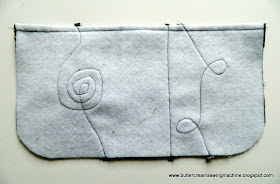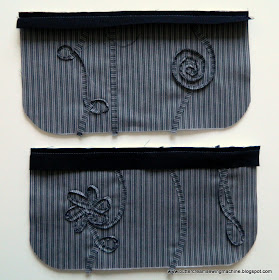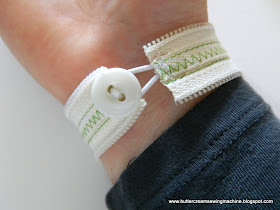My grandma bought this Bopple Ball pattern last summer on our annual quilting trip (8 quilt stores in two days - yes!). The other ladies who were riding in the bus with us were jealous of her find, as it was the last of this pattern in the shop. My grandma recently made a bopple ball for my sister's little one (remember - I made those cute little baby shoes!). She actually didn't have that much fun making the pattern, but she is primarily a quilter and this pattern has lots of little shapes to cut, sew, turn, and stuff. I, on the other hand, had a lot of fun putting together this project! I enjoy tedious little projects, and the result was so cute!
I chose to use two coordinating fabrics for my bopple ball (pink and dark brown).
The arms are pink on one side and brown on the other. I lined up the arms so the pink side of the arm would be touching a brown wedge and vice-versa.
There are 14 little arms and 8 wedges going around the bopple ball.
The diameter of the ball is about 8".
Two things make this pattern a little bit difficult:
#1 - The pattern pieces are confusing. The wedge pattern piece says to cut 8 and includes the seam allowance; however, the little arms say to cut 14 (but you really need to cut 28 pieces - one for each side of the arms) and you have to add in a 1/4" seam allowance around the piece. So, once I figured that out it was a lot easier - but it wasn't super user friendly from the start.
#2 - Turning the bopple ball right side out with all of those little arms. If you have patience or need patience, this project is for you!
Other notes: There is a circle of fabric that you can place on each end of the bopple ball to cover up where the seams all meet, but I omitted that. I used two 1/4 yard cuts (not fat quarters) in order to make the bopple ball - a little less fabric than what they asked for. But, I had almost no fabric leftover. I also only used about 16 oz. of stuffing instead of the 24 oz. they asked for - I stuffed it very firm too!
I would definitely make this pattern again. It was fun, and it is so cute! It will be fun for that little girl now, and it will still be fun to toss around when she is 3. Those are the best toys!
Other baby gift ideas:
Baby Kawaii Kimono Shoes
Baby Log Cabin Tag Quilt
Blogs I link to: CraftOManiac, Brassy Apple, Sumo’s Sweet Stuff, Tip Junkie, Shwin and Shwin, Home Stories A to Z, Creative Itch, Sugar Bee Crafts, Coastal Charm, Not Just a Housewife, Hope Studios, Chef in Training, Mommy By Day Crafter By Night, Southern Lovely, Passionately Artistic, Sew Woodsy, Savvy Southern Style, Ginger Snaps, Someday Crafts, Creations by Kara, Rae Gun Ramblings, Delightful Order, House of Hepworths, The CSI Project, Remodelaholic, Tatertots & Jello, Shabby Nest, Chic on a Shoestring, Simple Home Life, 30 Handmade Days, Family Ever After, Craftionary, I Heart Nap Time, Positively Splendid, Nifty Thrifty Things




















































